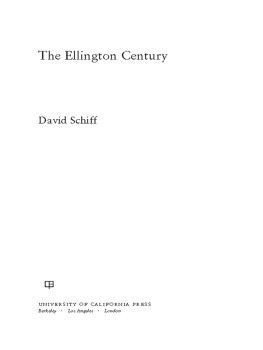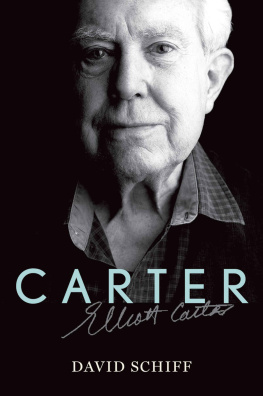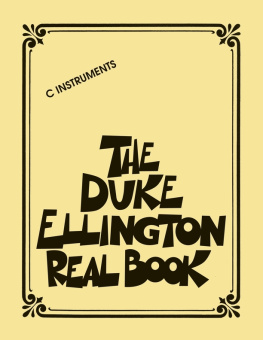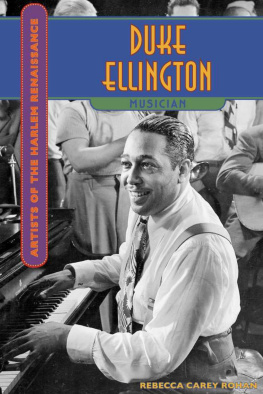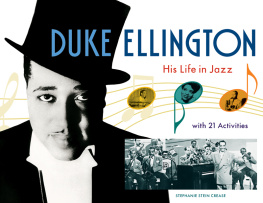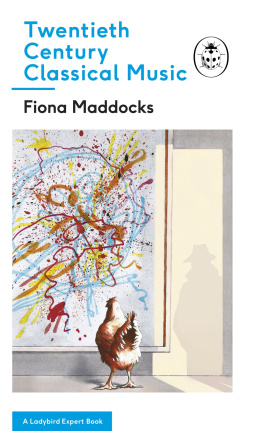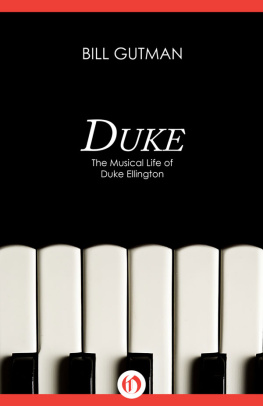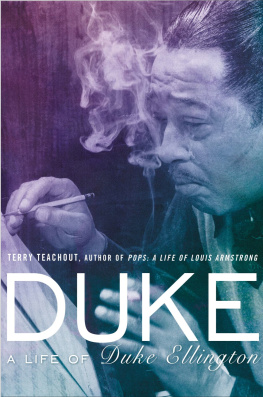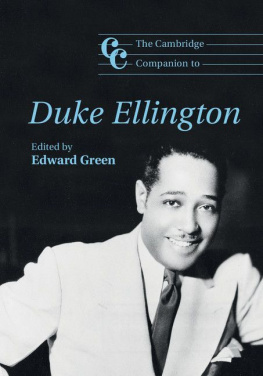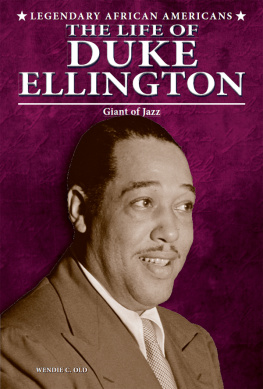
ROTH FAMILY FOUNDATION
Music in America Imprint
Michael P. Roth and Sukey Garcetti have endowed this imprint to honor the memory of their parents, Julia and Harry Roth, whose deep love of music they wish to share with others.
The publisher gratefully acknowledges the generous support of the Constance and William Withey Endowment Fund for History and Music of the UC Press Foundation.
The publisher also gratefully acknowledges the generous contribution to this book provided by the Manfred Bukofzer Endowment of the American Musicological Society.
Passages from the Duke Ellington poem discussed in chapter 6 courtesy of the Estate of Mercer K. Ellington and its executor, Paul M. Ellington.
University of California Press, one of the most distinguished university presses in the United States, enriches lives around the world by advancing scholarship in the humanities, social sciences, and natural sciences. Its activities are supported by the UC Press Foundation and by philanthropic contributions from individuals and institutions. For more information, visit www.ucpress.edu.
University of California Press
Berkeley and Los Angeles, California
University of California Press, Ltd.
London, England
2012 by The Regents of the University of California
Library of Congress Cataloging-in-Publication Data
Schiff, David.
The Ellington century / David Schiff.
p. cm.
Includes bibliographical references and index.
ISBN 978-0-520-24587-7 (cloth : alk. paper)
1. JazzHistory and criticism. 2. JazzAnalysis,
appreciation. 3. Ellington, Duke, 1899-1974
Criticism and interpretation. 4. Music20th century
History and criticism. I. Title.
ML3506.S287 2012
780.904dc23 2011034123
Manufactured in the United States of America
20 19 18 17 16 15 14 13 12
10 9 8 7 6 5 4 3 2 1
In keeping with a commitment to support environmentally responsible and sustainable printing practices, UC Press has printed this book on Rolland Enviro100, a 100 percent postconsumer fiber paper that is FSC certified, deinked, processed chlorine-free, and manufactured with renewable biogas energy. It is acid-free and EcoLogo certified.
To Judy
Preface
As a composer I spend the better part of my life happily adrift with only the haziest idea of what I'm doing. Composing veers from the directionless to the inevitable (calm sea to prosperous voyage) so suddenly that both phases seem beyond my control. Writing about music, for me, is most enjoyable when it feels similarly unwilled and when, like Columbus, I end up in a different place from the one I thought I was trying to reach. For better or worse, that is what happened many times in the course of writing this book.
The initial impulse for The Ellington Century sprang from my love for Duke Ellington's music (a devotion that began in high school when, browsing through the record store bins between Miles Davis and Maynard Ferguson, I came upon the LPs At His Very Best and Daybreak Express and which later was magnified by the pioneering research of Gunther Schuller and Mark Tucker) and my consequent dissatisfaction with most histories of twentieth-century music. Ellington's name rarely appeared in these accounts, and when it did he figured as an anomaly, a composer in a genre defined by improvisation, a serious popular musician who, unlike George Gershwin, never crossed over to the forms of the concert hall or opera house, a successful song writer who worked far from the commercial machinery of Tin Pan Alley and who never composed a hit Broadway musical. Music history conceived as separate stories about classical music, musical theater, and popular song placed Ellington's music on the periphery, somehow extraneous despite its undeniable appeal. With every rehearing, though, I came to feel that this music belonged at the center of a cross-categorical story that had yet to be written.
The distance that my own view of things had drifted from mainstream opinion became clear when, on the eve of the millennium, the New York Times asked me to write a retrospective article on the passing century. I opened my article by asserting that Ravel, Bartk, and Ellington were universally acknowledged as the three greatest composers of the century. Apparently finding my claim perversely idiosyncratic, an editor at the Times advised me to drop that opening and recenter the piece on Stravinsky and Schoenberg or Webern and Cage. I realize now that my initial lead, consigned until now to the Times' trash basket, was both provocative and overoptimistic (and idiosyncratic, though hardly perverse), but making a short list of greats taught me a lot about my own sensibility. Today the Ravel/Bartk/Ellington trinity stands even higher in my critical estimation, but I realize that I came to value Ravel and Bartk by first absorbing Debussy and Stravinsky; I listened to their music, particularly La Mer and Agon, so much in my early years that now I simply take their influence for granted. (Just so you know how strange I was: in high school I used to walk around singing the twelve-tone Surge, aquilo aria from Stravinsky's Canticum Sacrum, and I would play through whole acts from Pellas in my head from memory. No wonder I wasn't popular.) A decade of round-the-clock Mahler a little later on left a similar indelible mark, as did an intense Zappa phase (which, regrettably, never surfaces in this book). Before I began to listen to Ellington, I had steeped myself in the three M's: Mingus, Monk, and Miles; I was fortunate to hear all three perform live many times, and I think I've gone through seven copiesLPs, tapes, and CDsof Kind of Blue. All these musicians shaped my musical proclivities before the age of twenty. Over the years my taste in music has expanded widely and unpredictably, though I still have plenty of blind spots, as my students will be happy to tell you.
The first sketch for this book attempted a revisionist history of a short Ellington century from 1899 to 1974, but I soon realized that I was not a historian either by training or by temperament; the book would be a composer's view, not a historian's (though, reader be warned, my previous life as a student of English literature has also left its mark). I also consciously decided not to build the project on a foundation of gripes. I wanted to talk about the music I liked, not quibble with Adorno or Boulez. The music I liked included works from genres that are usually treated separately, and unequally. I hoped to punch some holes in the walls between them, but I gradually came to appreciate the full force of Ellington's dictum: It's all music. The old categories of high and low, elite and vernacular, even of European and American and black and white, misrepresented a shared worldwide project: imagining and creating music that illuminated the unprecedented conditions of modern life.
One day, after I had mapped out a chronological outline of the century with some flashy chapter headings, an alternative approach suddenly came to mind and defined the task at hand. Instead of doing battle with history I would write a nonhistory. Instead of organizing the book chronologically I would talk about music in terms of color, rhythm, melody, and harmony. Instead of trying to cover all the important music of the century in textbook fashion, I would just talk about particular works that illuminated these facets of musical expression, to which I later added three areas of musical representation: love, history, and God. For each of these areas I found it easy to identify music by Ellington that exemplified expressive and technical pursuits shared with many other composers. An Ellington century then took shape (relatively) effortlessly.

